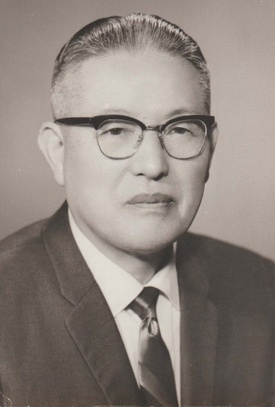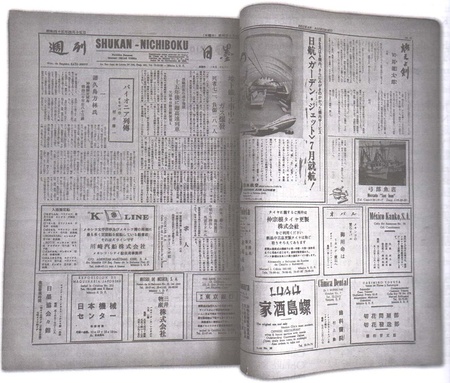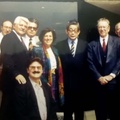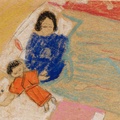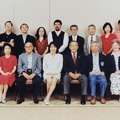Kenichi Muray was one of the hundreds of thousands of poor emigrants who sought a better future in America. Muray's story, like that of all immigrants, is very interesting in itself. Kenichi came from Shiga prefecture and arrived in Mexico in 1923 at the age of 22. She spent the first decade of her stay in the state of Chiapas and after a brief trip to Japan in 1928, when she married Shige Kobory, she returned to Mexico to settle in the city of Orizaba, Veracruz. In that town he opened his own business together with his wife, a haberdashery and silk shop called La Japonesa that would be very successful and would survive, even in the middle of the war, for several decades.
In this article, however, I will focus on detailing not Muray's life, but rather addressing his work, the legacy he has left us by recovering the stories of the pioneers who arrived in Mexico at the beginning of the 20th century.
In the twilight of his life, Muray dedicated himself to personally visiting the pioneer immigrants who still lived in Mexico. He considered these people as “the possessors of the living history of migration… as living treasures that have resisted the winds and the frosts.” This is how Muray describes them in a letter he sent in 1969 to the Japanese consul in Mexico, Tadakazu Itoh.
Starting in 1970, and until shortly before his death five years later, Muray devoted himself with great enthusiasm to personally interviewing immigrants over 80 years of age. The commitment that was undertaken represented quite a feat since it visited nearly 140 pioneers. The “living treasures” were the bearers of the secrets and circumstances in which the pioneers arrived; To reveal and get to know them, Muray had to travel from Baja California to Yucatán to interview them because many of them did not live in Mexico City.
The stories that Muray gradually rescued in the last five years of his life began to be published in Japanese in the weekly newspaper Shukan-Nichiboku , edited in Mexico by Mr. Oscar Tosha.
It is difficult to summarize all the stories that Muray wrote but in general the reader will be able to find in them the place from which the immigrants came and the conditions under which they left Japan. We will also be able to understand how they integrated into Mexico at work and socially from four elements or moments:
- The situation of the settlers or farmers, starting with the first 34 pioneers who arrived in Chiapas. The life of those hired on the La Oaxaqueña hacienda, in the south of the state of Veracruz, a sugar producer. Immigrants dedicated to the mines in Coahuila or Sonora; and finally, those workers who came to build the railways in the state of Colima.
- The transformations of these immigrants into small merchants and the constitution of communities by forming their families and becoming fully integrated into the places where they resided.
- The difficulties that pioneers faced during the revolution and decades later when the war broke out between the United States and Japan in 1941. Under the war, immigrants were forced to uproot themselves and move to the cities of Guadalajara and Mexico.
- Finally, the definitive integration of the pioneers into Mexico at the end of the war, and the creation of communities with their descendants up to the third generation.
The testimonies that Muray collected will also reveal other events that are important to highlight. For example, the experiences of professional immigrants such as veterinarians, botanists, engineers and doctors who contributed their knowledge and skills to Mexico. The solidarity that the Japanese communities showed with the country that received them - unlike other groups of immigrants of other nationalities - by not accepting the compensation that the Mexican government offered them for the damages they suffered during the civil war period that was unleashed starting in 1910. Nor should we fail to mention, among other examples, the 3 schools that the pioneers built in Chiapas and donated to the local populations.
In February 1975, at the age of 74, Kenichi Muray passed away. The testimonies that were published weekly in the Shukan Nichiboku seminar represented a valuable treasure not only for the history of the Japanese community but for the history of Mexico. Recognizing this enormous value, Mr. Muray's wife and his son-in-law, Ernesto Matsumoto, compiled each of the testimonies and decided to publish them in Japan with the title Paionia Retsuden, Chronicles of the Pioneers, in 1976.
Fortunately, in 2017, when the 120th anniversary of the arrival of the first Japanese immigrants to Mexico was celebrated, Kenichi's son, Alfonso Muray, decided to make this treasure known to the Spanish-speaking public. To publish the 127 testimonies of the same number of pioneers, we had the support, first of all, of Makoto Toda who was in charge of translating them and of Shozo Ogino who provided his valuable archive of photographs to illustrate them. The bilingual edition was carried out by Editorial Panorama.
The published book is a fundamental reference for all those who wish to know in detail the history of immigrants and is also a mandatory reference for the history of relations between Mexico and Japan.
The story of Kenichi Muray's life throughout his 52 years in Mexico has yet to be written. The commitment that as a historian I have with this immigrant will be the best recognition of his work.
© 2018 Sergio Hernández Galindo


